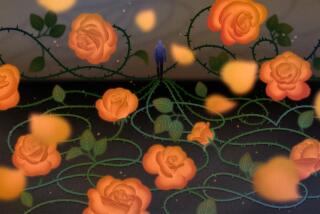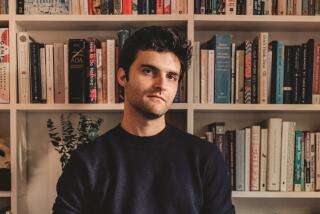Dark Blizzard of Photos Connects Those Left Behind
In these terrible times, when the dialogue between different cultures seems to have been replaced by the language of bombs and fear, I see a dreadful form of hope, a potential for communication across frontiers, in the dark blizzard of photos of the missing that have been covering the streets of New York for the last three months.
It is an extraordinary recognition of our common humanity that the inhabitants of the most prosperous city in the world, when faced with the infernal dilemma of dealing with the instantaneous and violent disappearance of friends and relatives, recurred to the same methods of memory and defiance that thousands upon thousands of others from the most remote and often impoverished regions of the planet have used over the last 25 years to cope with a similar mental hell when dictators denied them the bodies of their loved ones.
I am aware, of course, of the distances that separate the incinerated missing of New York from the political desaparecidos of the rest of the world and do not wish to conflate these quite distinct tragedies.
In the United States, after all, it is not the government that has kidnapped and concealed the bodies of the presumed dead or mocks those who seek information about the missing.
Deep connections can, nevertheless, be made. The inhabitants of the most modernized society in the world may now be able to grasp, in ways that would have been unthinkable before Sept. 11, the experience of so many hitherto inaccessible global brothers and sisters.
How can Americans not understand, now that they know what it means to have thousands of people suddenly evaporate into nothingness with no body to prove or disprove life or death? How can they not feel closer to an old woman I know in Chile who still awakes after midnight and listens for footsteps that could be her husband’s, even if she knows that 27 years have gone by and that it would be better that he not return? Who would want him to be tortured for those long years?
How can they not empathize, now that they hold up their photos to search for a sliver of certainty, hoping to find in words from some stranger a final witness to their beloved’s last moments? How can their hearts not go out to the grandmothers in Argentina determined to track down the unknown children of their sons and daughters born in captivity and farmed out to sterile military families, grandmothers who want to see in the eyes of those babies now grown up the ultimate inheritance left by their dead offspring?
And as the operation in the smoldering ruins of the World Trade Center wearily turned from rescue to recovery, extinguishing the expectation of one more miracle, how could the survivors not share the unyielding grief of the families of the desaparecidos of other lands like ... , yes, like Afghanistan, who have spent years trying to force themselves to realize that they can no longer trust that the missing son, daughter, husband, lover, father will ever turn up?
New Yorkers are, I believe, discovering what the women of the missing in Ethiopia and Cyprus and Cambodia and Brazzaville also gradually comprehended in different circumstances. Their flock of photographs shrouding an entire city are destined to become a transitory burial ground where the living and the dead can commune, a site of collective mourning, the only monument immediately possible for a city that needs to turn itself into an extended graveyard of its missing dead if it is to go on with life.
Is it possible, then, that these fundamental, radical experiences of death and vulnerability could open millions of Americans to the meaning of disappearance in its multiple forms, to the horror and wonder of breathing an air filled with the oxygen of the absent dead. Can they help us to feel linked to the deep suffering of so many of our kinsmen who, all across the Earth, still pin a photo of their loved ones to their clothes in a quest for closure, seeking the relief of a final burial?
There is, of course, no guarantee that pain and victimhood lead to empathy, no certainty that this would allow the forgotten victims of the world to emerge from invisibility. Enormous sorrows have, after all, so often led to self-absorption and indifference and revenge.
But I would like to think that a global tragedy such as we are now living might also guide us toward a new global compassion and identification between peoples that has been sadly lacking. I hope and pray that in the years to come we can find ways of globalizing mercy and understanding with as much efficiency and energy as we have put into the globalization of war and violence.
*
Ariel Dorfman is the author of “Death and the Maiden.” His most recent book is “Blake’s Therapy” (2001, Seven Stories Press), a novel.
More to Read
Sign up for Essential California
The most important California stories and recommendations in your inbox every morning.
You may occasionally receive promotional content from the Los Angeles Times.










